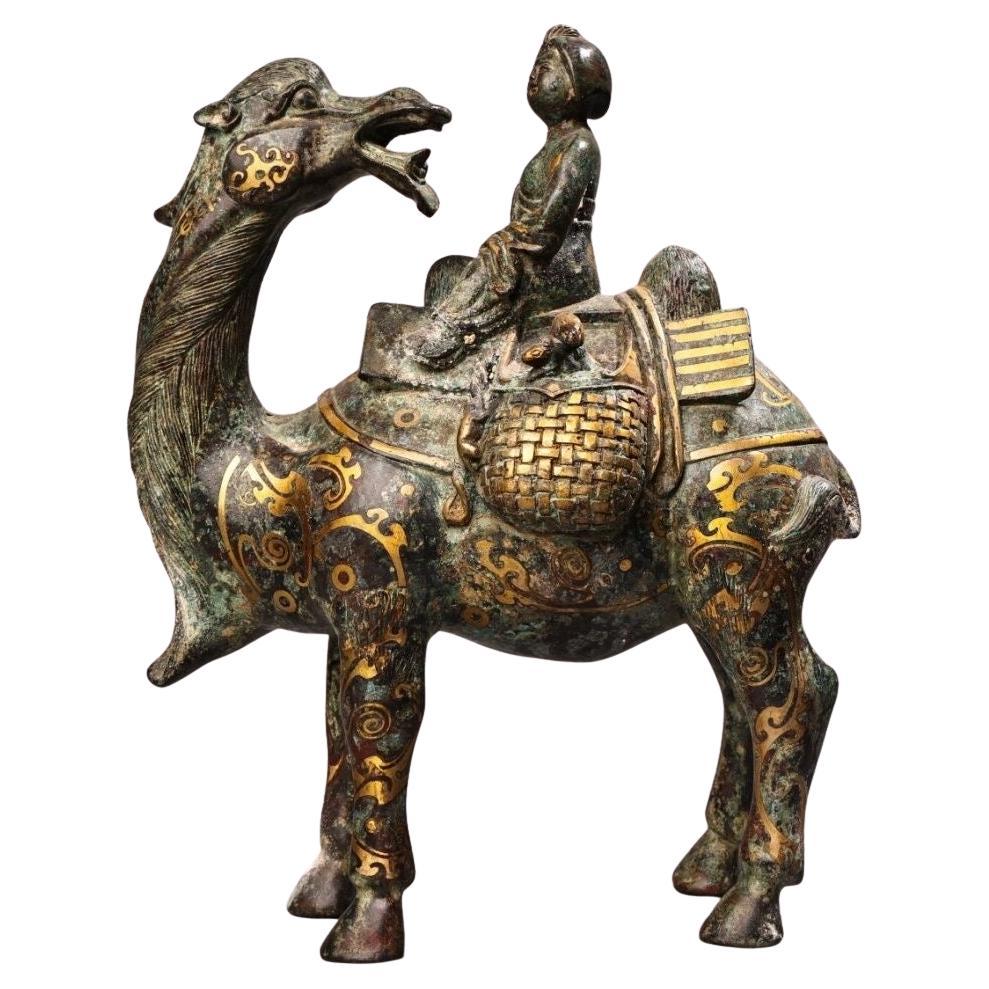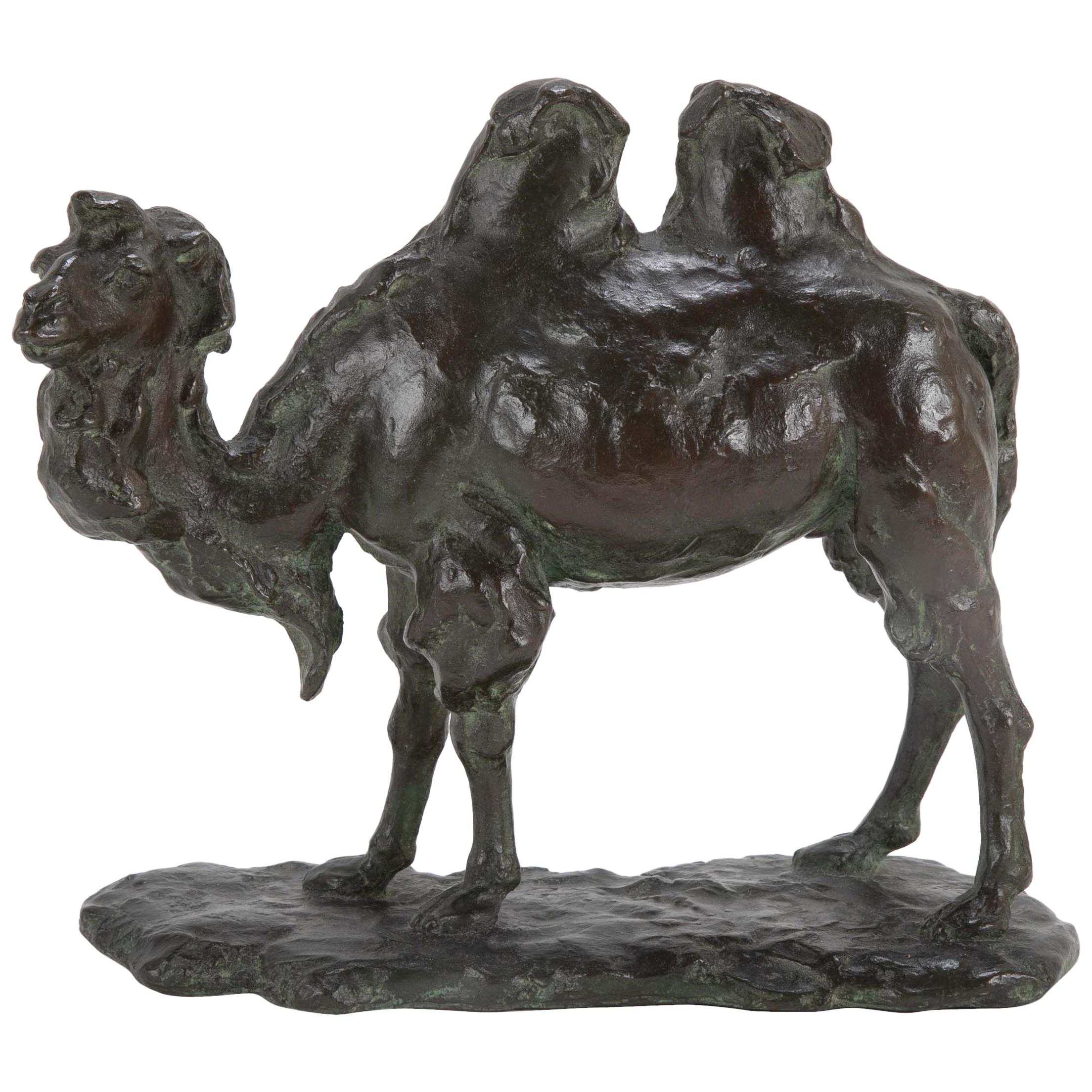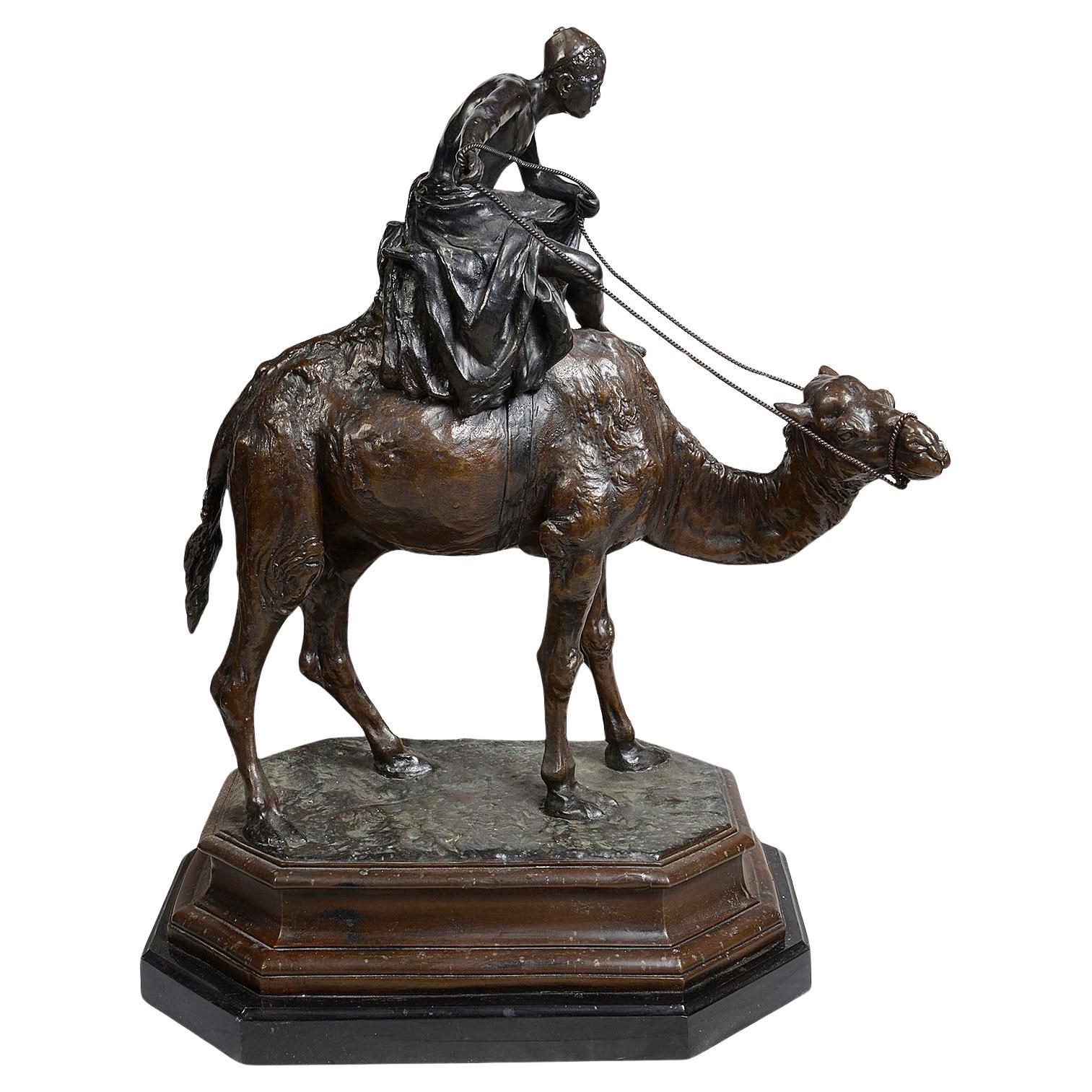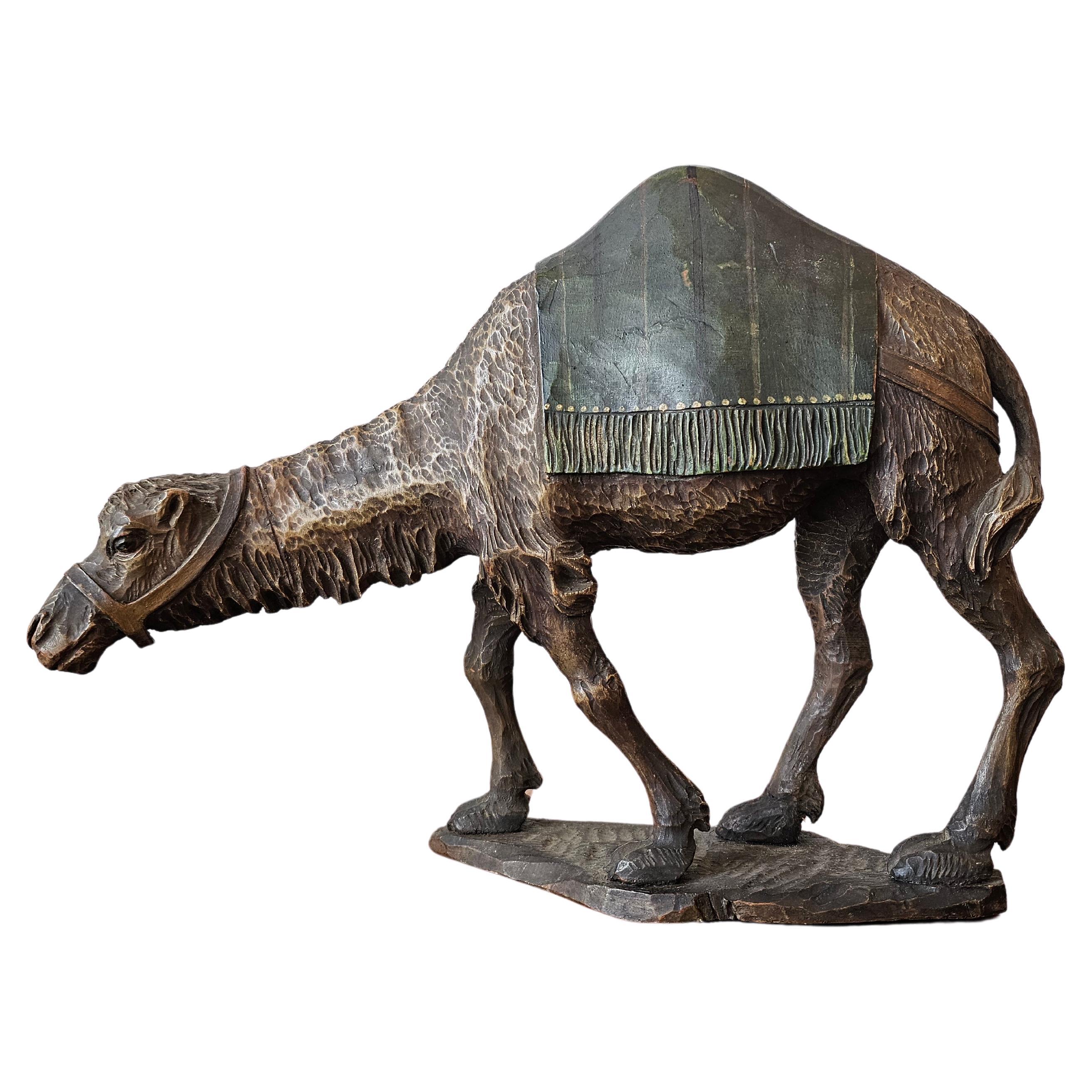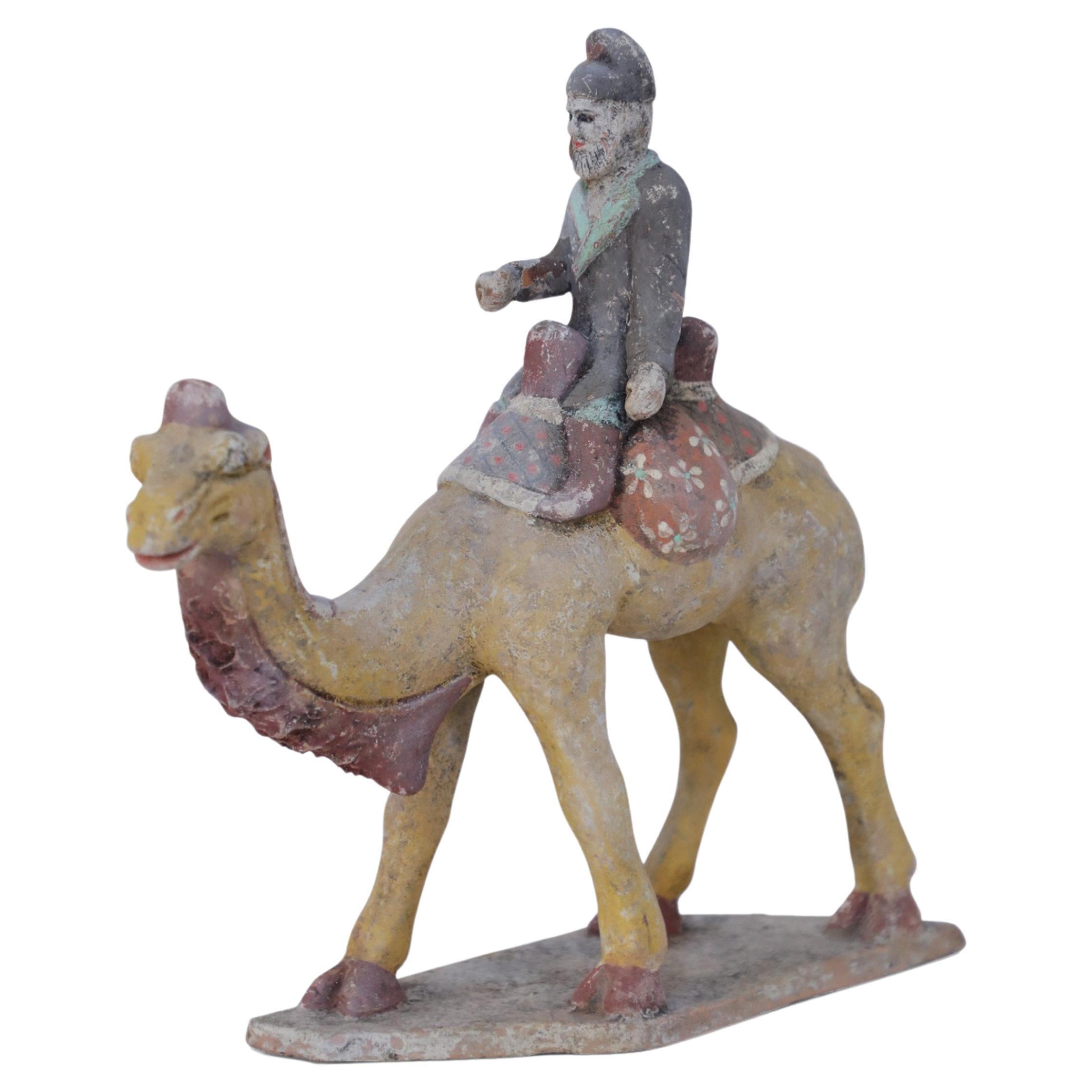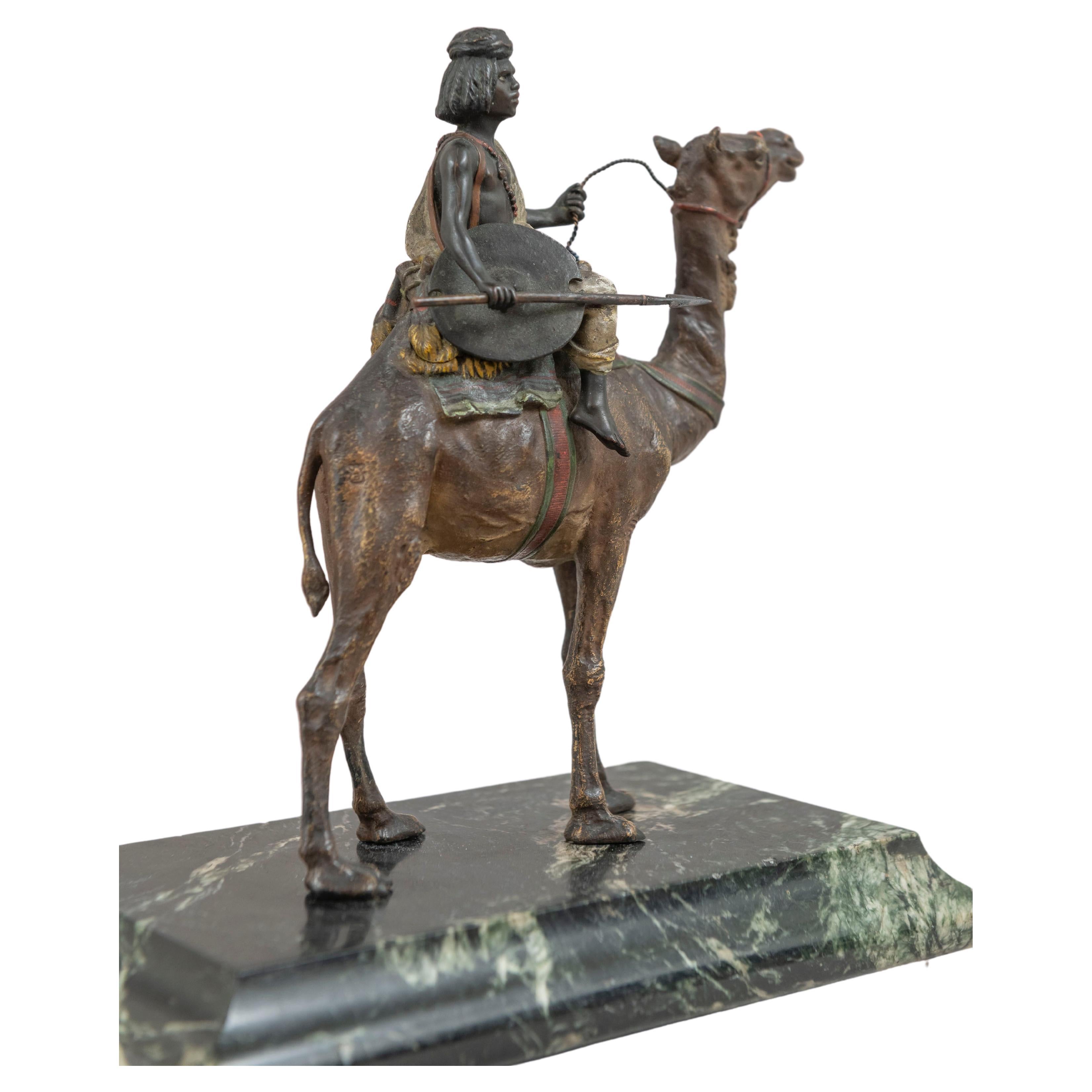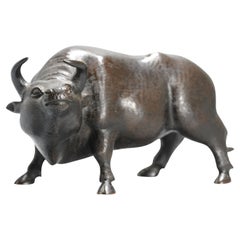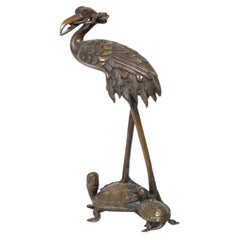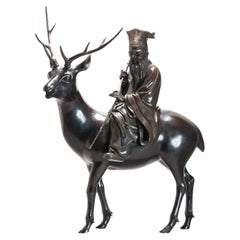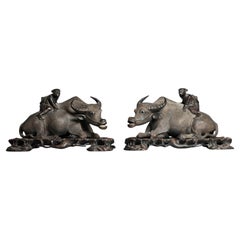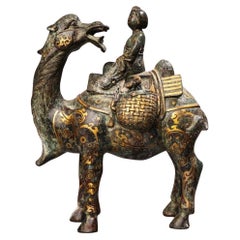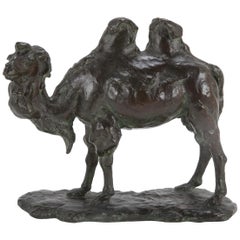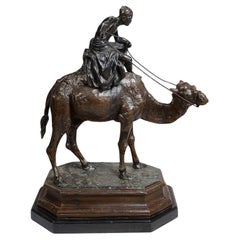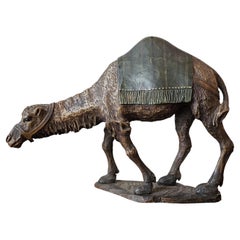Items Similar to Large 19c Antique Meiji Period Japanese Camel and Figure Bronze Cloisonne
Want more images or videos?
Request additional images or videos from the seller
1 of 21
Large 19c Antique Meiji Period Japanese Camel and Figure Bronze Cloisonne
$4,614.62
$5,768.2820% Off
£3,418.74
£4,273.4320% Off
€3,870.40
€4,83820% Off
CA$6,321.80
CA$7,902.2520% Off
A$7,014.57
A$8,768.2120% Off
CHF 3,674.38
CHF 4,592.9820% Off
MX$86,017.45
MX$107,521.8220% Off
NOK 46,736.88
NOK 58,421.1020% Off
SEK 44,117.62
SEK 55,147.0220% Off
DKK 29,441.28
DKK 36,801.6020% Off
Shipping
Retrieving quote...The 1stDibs Promise:
Authenticity Guarantee,
Money-Back Guarantee,
24-Hour Cancellation
About the Item
Lovely and beautifully made piece
Cloisonné is an enamelling technique in which the pattern is formed by wires soldered to the surface of the object to be decorated, which is usually made from copper, forming cells or cloisons, each of which holds a single colour of enamel paste which is then fired, and ground and polished. The champleve technique also uses an enamelling technique, but the cells are formed by carving into the surface ot the object, or in the casting. The cloisonne technique has been in use since the 12th century BC in the west, but the technique did not reach China until the 13th or 14th century. It became popular in China in the 18th century. Initially bronze or brass bodies were used, and in the 19th century copper, at which time the quality of th eitems produced began to decline. Chinese cloisonné is the best known enamel cloisonné, though the Japanese produced large quantities from the mid-19th century, of very high technical quality. In the west the cloisonne technique was revived in the mid 19th century following imports from China, and its use continued in the Art Nouveau and Art Deco periods.
Nice PAtina and some ware, Size: 43 x 35cm
- Dimensions:Height: 9.65 in (24.5 cm)Diameter: 14.97 in (38 cm)
- Style:Edo (Of the Period)
- Materials and Techniques:
- Place of Origin:
- Period:
- Date of Manufacture:1800
- Condition:Minor losses.
- Seller Location:Amsterdam, NL
- Reference Number:Seller: 1320000896561stDibs: LU4863242272372
About the Seller
5.0
Platinum Seller
Premium sellers with a 4.7+ rating and 24-hour response times
Established in 2015
1stDibs seller since 2019
262 sales on 1stDibs
Typical response time: 2 hours
- ShippingRetrieving quote...Shipping from: Amsterdam, Netherlands
- Return Policy
Authenticity Guarantee
In the unlikely event there’s an issue with an item’s authenticity, contact us within 1 year for a full refund. DetailsMoney-Back Guarantee
If your item is not as described, is damaged in transit, or does not arrive, contact us within 7 days for a full refund. Details24-Hour Cancellation
You have a 24-hour grace period in which to reconsider your purchase, with no questions asked.Vetted Professional Sellers
Our world-class sellers must adhere to strict standards for service and quality, maintaining the integrity of our listings.Price-Match Guarantee
If you find that a seller listed the same item for a lower price elsewhere, we’ll match it.Trusted Global Delivery
Our best-in-class carrier network provides specialized shipping options worldwide, including custom delivery.More From This Seller
View AllAntique Edo/Meiji 19th c Ox Okimono Bronze Japanese Statue Morimasa Signed
Located in Amsterdam, Noord Holland
Country of origin: Japan
Age: Edo/Meiji Period 19th century
Size: 19 cm x 11 cm Diameter
Condition: Good condition. SIze: 19x11cm
Period
19th century
Category
Antique 19th Century Chinese Planters, Cachepots and Jardinières
Materials
Porcelain
$2,706 Sale Price
20% Off
Japanese Okimono Incense Holder Sticks Bronze Statue Meiji Era, 1868-1912
Located in Amsterdam, Noord Holland
Japan - MeuiI period (1868 - 1912) bronze Okimono turtle incense burner
Meiji era (1868-1912), 19th century
Additional information:
Material: Bronze, Cloisonne & Metal
Region of Or...
Category
Antique 19th Century Japanese Meiji Animal Sculptures
Materials
Bronze
Huge Antique Meiji Japanese Bronze Shou Lao - Jurojin and Deer Incense Burner
Located in Amsterdam, Noord Holland
A very large and top quality Meiji period Incense burner of Jurojin - Shou Lao and a deer
God of longevity associated with the Canopus star of the South Pole. Usually represented as...
Category
Antique 19th Century Japanese Meiji Ceramics
Materials
Metal, Bronze
$13,628 Sale Price
20% Off
Large Pair ca 1900 Finely Chinese Carved Wood Statue of Ox and Boys Chinese
Located in Amsterdam, Noord Holland
China, finely carved wooden statues of boys on oxes. Very nice details. Late Qing or Republic period.
Condition
in general good condition with some usual ware. Cow with a broken ho...
Category
20th Century Chinese Vases
Materials
Porcelain
Antique Seiya-sei for Genryusai Seiya Bronze Man and Monkey Statue Japan Meij
Located in Amsterdam, Noord Holland
BRONZE Seiya-sei for Genryusai Seiya Man and Monkey figure. Marked on base
Meiji era (1868-1912), 19th century
Condition
Condition is Perfect: Size 33.5 cm high
Period
19th century ...
Category
Antique 19th Century Japanese Meiji Ceramics
Materials
Metal, Bronze
$5,043 Sale Price
20% Off
Large Takachika" & "Kakuha sei" Bronze Elephant Herd Statue Japan Meiji era
Located in Amsterdam, Noord Holland
A very nice statue of a Elephant Herd. 66cm with double mark "Takachika" & "Kakuha sei"
Kakuha Kanzaemon IX (角羽勘左衛門), real name Kakuha Zenjirô (角羽善次郎), was a member of a lineage of metalworkers from Toyama. In 1869, he started a branch office in the port of Yokohama for export trade of bronze ware and also acting as a retailer for foreign clients in Japan.
The artist is Sano Takachika...
Category
Antique 19th Century Japanese Meiji Ceramics
Materials
Metal, Bronze
$13,628 Sale Price
20% Off
You May Also Like
19th Century Asian Gold Bronze Lady Riding Camel Statue
Located in 景德镇市, CN
Elevate your collection with this 19th Century Asian Gold Bronze Statue featuring a finely detailed depiction of a lady gracefully riding a camel. This exquisite piece captures the cultural and artistic sophistication of the era, blending elegance and symbolism in a timeless design.
The statue showcases intricate craftsmanship, with lifelike details in the lady’s attire and the camel’s textured form. Finished in a lustrous gold bronze patina, this artwork represents themes of journey, trade, and cultural exchanges along the ancient Silk Road, making it a significant historical artifact.
Ideal for antique collectors, art enthusiasts, or as a standout decorative piece, this bronze lady riding camel statue...
Category
Antique 19th Century Metalwork
Materials
Bronze
A Japanese Bronze of a Bactrian Camel
Located in Stamford, CT
A sculpted Japanese bronze of a Bactrian camel.
Category
Antique Early 1900s Japanese Showa Animal Sculptures
Materials
Bronze
19th Century bronze Arab on a camel.
Located in Brighton, Sussex
A very impressive 19th Century patented bronze Arab riding a Camel, circa 1860-80.
Batch 78 62290 DNKZZ
Category
Antique 19th Century French Abstract Sculptures
Materials
Bronze
Antique Moroccan Carved Polychrome Painted Wooden Camel Figure Sculpture
Located in Forney, TX
A superbly carved camel statue, early 20th century, Morocco, exceptionally executed, the North African Art Deco Orientalist figural carving features fine...
Category
Early 20th Century Moroccan Art Deco Animal Sculptures
Materials
Wood, Paint
Chinese Tang Dynasty-Style Camel with Rider Tomb Figure
Located in Queens, NY
Antique Chinese Tang Dynasty-style terracotta tomb figure of a bearded rider dressed in a gray coat and brown boots riding a yellow Bactrian camel standin...
Category
20th Century Chinese Export Animal Sculptures
Materials
Terracotta
Orientalist Cold Painted Vienna Bronze Boy on Camel by Franz Bergmann, ca. 1900
By Franz Bergmann
Located in Petaluma, CA
This Orientalist bronze was done by Franz Bergman and does bear his signature. Meticulously cold painted and highly detailed make this one of his best examples. The camel and the boy...
Category
Early 20th Century Austrian Moorish Figurative Sculptures
Materials
Marble, Bronze
More Ways To Browse
Bronze Cloisonne
Brass Camel
Meiji Figure
Camel Art Deco
Large Cloisonne Chinese
Japanese Cloisonne Bronze
Cloisonne Porcelain
Meiji Bronze Sculptures
Antique Bronze Ware
Antique Champleve
Chinese Camel
Champleve Cloisonne
Japanese Cloisonne Porcelain
12th Century Bronze
Japanese Champleve
Art Deco Cloisonne
Japanese Art Nouveau Bronze
Chinese Champleve
